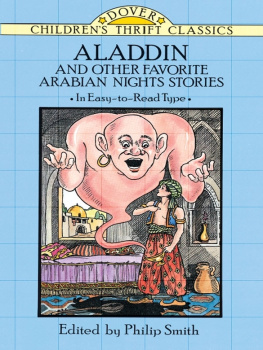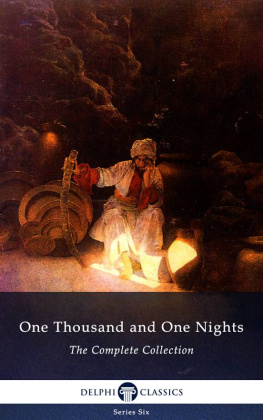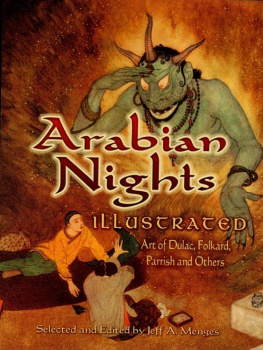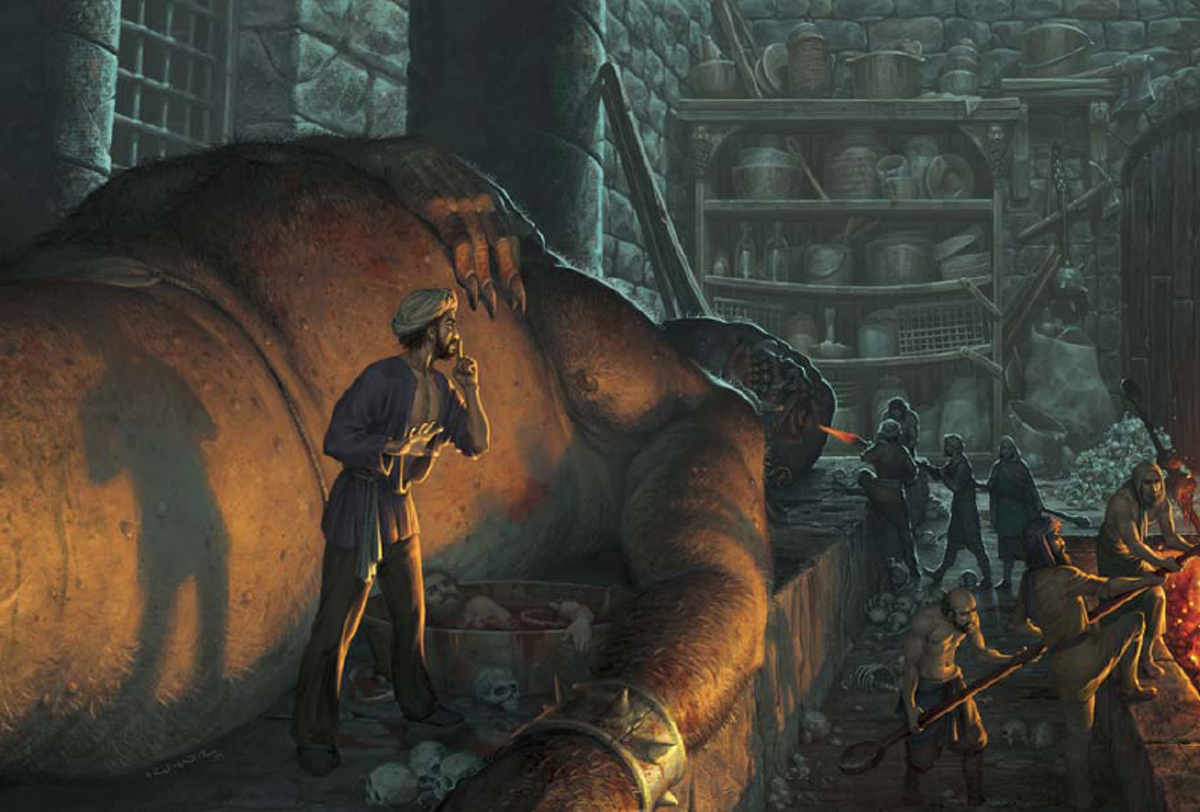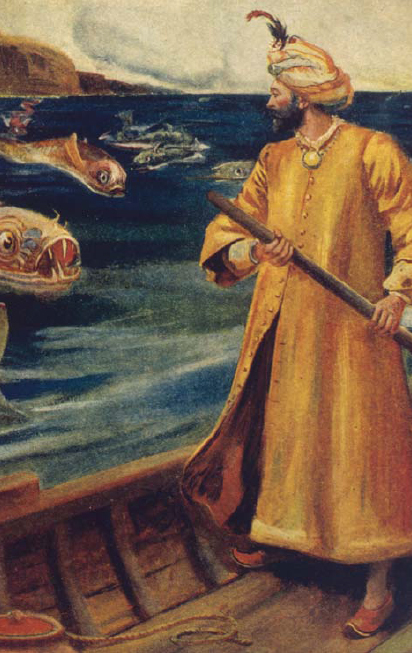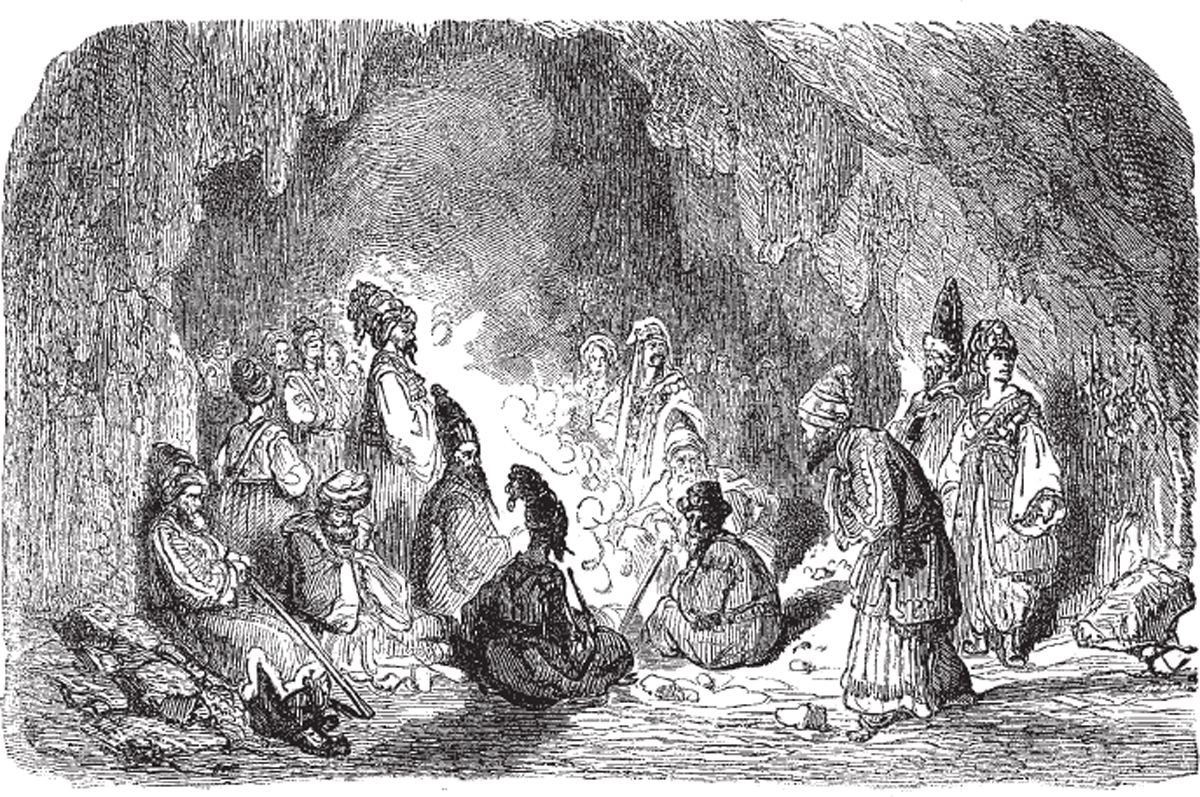SINBAD THE SAILOR
BY PHIL MASTERS
ILLUSTRATED BY a RU-MOR
C ONTENTS
I NTRODUCTION : T ALES W ITHIN T ALES
Sinbad the Sailor is one of the great travellers in world literature. He arrived in Europe at the beginning of the 18th century, and his stories became famous as part of the great Arabian Nights story cycle. This was the first of many times that European readers became a bit confused about Sinbad (alias Sindbad or Es-Sindibad of the Sea). Actually, theres no real evidence that his tale formed part of the Nights before then. Sinbads history is full of strange moments.
The 1,001 Nights
The Arabian Nights, also known as the 1,001 Nights, is a collection of folk-tales, parables, legends, and anecdotes, set within a unifying framework. The collection seems to have come to the Arab world from Persia some time before the 10th century; its earliest origins vanish into lost history, although some scholars think that the story-cycle may have originated in India. These stories would have been the repertoire of public storytellers giving performances in coffee shops and on street corners in their personal styles, so they probably changed a lot over time. The earliest surviving manuscript goes back to 14th15th-century Syria, although there is also a very small 9th-century Egyptian fragment.
The framing story is famous. A great king discovers that his wife has been unfaithful, and, enraged at all women, resolves to avoid any more betrayals by taking a new virgin as his bride every night and having her executed in the morning. Eventually, though, Scheherazade, the daughter of his vizier, volunteers to be the next bride, tells him stories in the night, and ends them on a cliffhanger which makes him spare her so that he can hear the end of the tale. She repeats this process for 1,001 nights, even giving the king children along the way, until he announces that he will spare her completely, and they all live happily ever after.
Today, the stories of Sinbads seven amazing voyages are often fitted into that framework. But the Sinbad stories actually have their own framework to hold them together like that of the Arabian Nights, a matter of one fictional character telling stories to another. They also have their own, obscure history, perhaps going back to ancient Egypt; they certainly include scenes that can be traced back to ancient Greek epics. However, they probably owe most of their inspiration to stories of real Arab voyages on the Indian Ocean in the 8th10th centuries.
Arrivals in Europe
In fact, Sinbad came to Europe ahead of Scheherazade. Both were brought by a French traveller and scholar named Antoine Galland, who visited the East and then returned home to a country where local fairy tales were in fashion among well-bred readers. Around 1701, he published a French translation of the Sinbad stories. When someone then told him that they were part of a larger work, he decided that the work in question must be the Nights, acquired that 14th15th-century manuscript, which still exists (at least in part) and which doesnt feature Sinbad, and published a heavily adapted French translation between 1704 and 1717. This was itself soon translated into English, although no direct English translations of any Arabic versions appeared until the 19th century.
An illustration of one of Sinbads many monstrous encounters in this case, a group of giant fish. (Mary Evans Picture Library)
It is actually likely that it was only after Europeans started lumping Sinbad into the Nights that Eastern storytellers decided that they might as well do the same. Arabic manuscripts dating from after Gallands work feature Sinbad, but there is no evidence that this was done earlier. There was certainly enough contact between East and West in the 18th century for ideas to migrate both ways. Nor is this is the only part of the Nights that may have flowed back to the East from Europe. It is possible that such well-known stories as those of Aladdin and Ali Baba may have been invented by Galland, or by Middle Easterners whom he employed for advice. But both the Nights and the Sinbad cycle developed from the first by absorbing stories from anywhere they could be found, so all this is really just part of a continuing process.
This book tells the tale of Sinbad as it appears in modern versions of the Nights, and then looks at how Sinbad has moved on from there. But it all starts with his story.
T HE S EVEN V OYAGES OF S INBAD
It is written that in the time of the Caliph Haroun al-Rashid, in his city of Baghdad, many wonders were seen and strange tales were told. The wealthy and powerful rubbed shoulders with the poor and unfortunate, and destiny could cast the one down and raise the other up in a moment. One tale of that age of wonder concerned a poor man and a rich man, who chanced to share a name, and who happened to meet one day.
Sinbad the Porter and Sinbad the Sailor
Among the thousands of poor men living in Baghdad was one known as Sinbad the Porter, who scraped a living carrying loads around upon his head. One hot day, he was carrying a heavy load through a wealthy part of the city when he passed the house of a merchant. The street before the house was swept and watered so there was no dust, and there was a wooden bench by the door. Sinbad the Porter felt very tired, so he stopped for a moment to mop the sweat from his brow.
As he rested, a cool breeze blew through the door, carrying a pleasant scent of fine food and wine and the sound of beautiful music and birdsong from the courtyard within. Peering through the doorway, the porter saw richly-dressed servants and slaves.
S INBAD S N AME
Thanks to these tales, Sinbad is now quite a familiar name in the West, although it isnt often encountered outside stories. (It does occur in one other set of stories within the Arabian Nights.) Despite this association, it is probably not Arabic in origin; it seems to be Persian, or possibly Indian, and it probably means Lord of the Sindh River. The Sindh, or Indus, is a river in what is now Pakistan, and sailors from the region were famously skilled. (Sinbad visits the region on his third voyage.) This may hint at part of the origin of the Sinbad stories.
In addition, Sinbad is called the Sailor, which is perhaps his laqab, a nickname or title which often acted as something like a surname in early Arab societies. (For example, the Caliph Harouns laqab was al-Rashid, meaning the rightly-guided.) It might be more accurate to translate Sinbads laqab as the seafarer or of the sea rather than the sailor; in the stories, he generally leaves ship operation to professional captains, showing no special skills in that direction himself. He travels by sea a lot, but almost entirely as a merchant-passenger.





